
Paul Frankeur was a French actor who appeared in films by Jacques Tati, such as Jour de fête and Luis Buñuel, including The Discreet Charm of the Bourgeoisie and The Phantom of Liberty). He was sometimes credited as Paul Francoeur.

Royal Affairs in Versailles is a 1954 French-Italian historical drama directed by Sacha Guitry. Described as "a historical film showing Versailles from its beginnings to the present day", it tells some episodes through portrayal of the personalities who lived in the Palace of Versailles. Its sister films are Napoléon (1955) and If Paris Were Told to Us (1956).

Poil de carotte is a long short story or autobiographical novel by Jules Renard published in 1894 which recounts the childhood and the trials of a redheaded child. It is probably in this miserable childhood story where one should look for the origins of Renard's skepticism and irony, his skill in using litotes, his dense and precise styles.

Millionaires for One Day is a 1949 French comedy film directed by André Hunebelle and starring Gaby Morlay, Jean Brochard and Ginette Leclerc. It was shot at the Francoeur Studios in Paris. The film's sets were designed by the art director Lucien Carré. It was produced and distributed by Pathé.
Robert Lynen was a French actor. A child star of French cinema, he joined the French Resistance during his country's occupation during World War II, was arrested and deported to Germany, and shot by a Nazi firing squad after repeated escape attempts.

Darling Caroline is a 1951 French historical comedy film in black and white, directed by Richard Pottier and starring Martine Carol, Jacques Dacqmine, and Marie Déa. It is based on Jacques Laurent's historical novel "The loves of Caroline Cherie: A novel". It was remade as Darling Caroline in 1968.

Goodbye Darling is a 1946 French drama film directed by Raymond Bernard and starring Danielle Darrieux, Louis Salou and Gabrielle Dorziat. The film's sets were designed by the art director Robert Gys.

Three Telegrams is a 1950 French drama film directed by Henri Decoin and starring Gérard Gervais, Pierrette Simonet and Olivier Hussenot. The film's art direction was by Auguste Capelier. It was made at the Billancourt Studios in Paris.
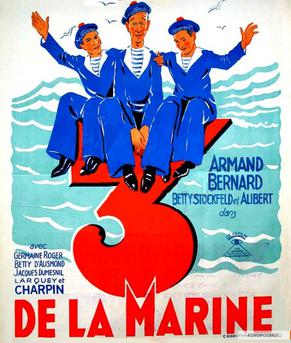
Three Sailors is a 1934 French comedy film directed by Charles Barrois and starring Armand Bernard, Betty Stockfeld and Henri Alibert. It was remade in 1957.

The Red Head is a 1925 French silent drama film directed by Julien Duvivier and starring Henry Krauss, Charlotte Barbier-Krauss and André Heuzé. Duvivier remade it as a sound film of the same name in 1932.
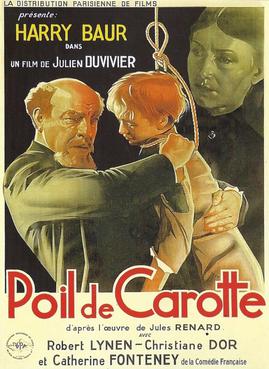
The Red Head is a 1932 French drama film directed by Julien Duvivier and starring Harry Baur, Robert Lynen and Louis Gauthier. It is a remake of Duvivier's 1925 silent film The Red Head.

Albert Vidalie was a French writer, screenwriter, and songwriter.
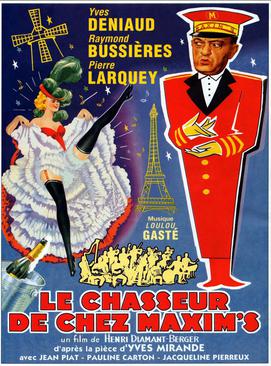
The Porter from Maxim's is a 1953 French comedy film directed by Henri Diamant-Berger and starring Yves Deniaud, Pierre Larquey and Raymond Bussières. It is based on the 1923 play of the same name which has been made into several film adaptations. It was shot at the Neuilly Studios and on location in Paris. The film's sets were designed by the art director Roger Briaucourt.
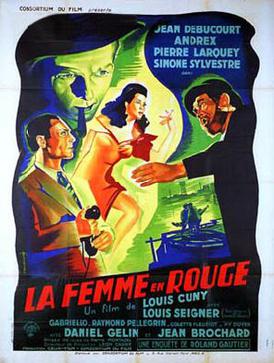
The Woman in Red is a 1947 French crime film directed by Louis Cuny and starring Jean Debucourt, Pierre Larquey and Andrex.

Monsieur des Lourdines is a 1943 French historical drama film directed by Pierre de Hérain and starring Raymond Rouleau, Germaine Dermoz and Mila Parély. It was shot at the Saint-Maurice Studios in Paris. The film's sets were designed by the art director Lucien Aguettand. It is an adaptation of Alphonse de Chateaubriant's 1911 novel of the same title. The film's director was the stepson of Marshal Pétain and its themes are supportive of Vichyite policy.
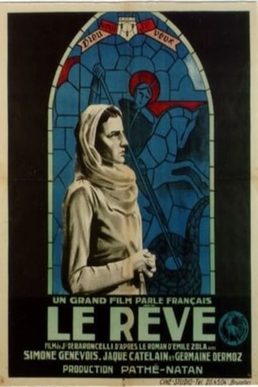
The Dream is a 1931 French drama film directed by Jacques de Baroncelli and starring Simone Genevois, Jaque Catelain and Jean Joffre. It is based on the 1888 novel of the same title by Emile Zola. It was shot at Pathé's Joinville Studios in Paris. The film's sets were designed by the art director Robert Gys.

The Mayor's Dilemma is a 1939 French drama film directed by Raymond Bernard and starring Annie Vernay, Saturnin Fabre and Fernand Charpin. It was shot at the Billancourt Studios in Paris and on location in Chézy-sur-Marne. The film's sets were designed by the art directors André Barsacq and Jean Perrier.
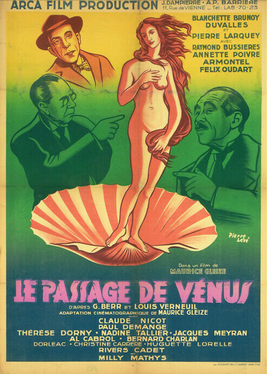
The Passage of Venus is a 1951 French comedy film directed by Maurice Gleize and starring Pierre Larquey, Blanchette Brunoy and Annette Poivre. The film's sets were designed by the art director Lucien Carré. It is based on the 1928 play of the same title by Georges Berr and Louis Verneuil.
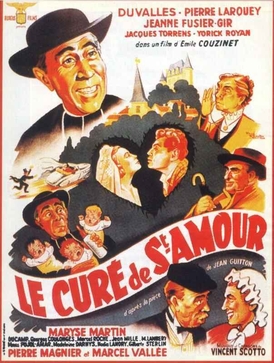
The Priest of Saint-Amour is a 1952 French comedy film directed by Émile Couzinet and starring Frédéric Duvallès, Pierre Larquey and Jeanne Fusier-Gir. The film's sets were designed by the art director René Renneteau.


















